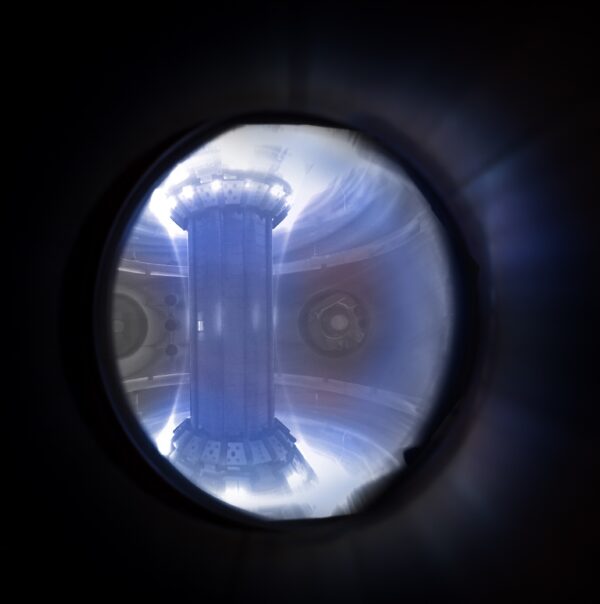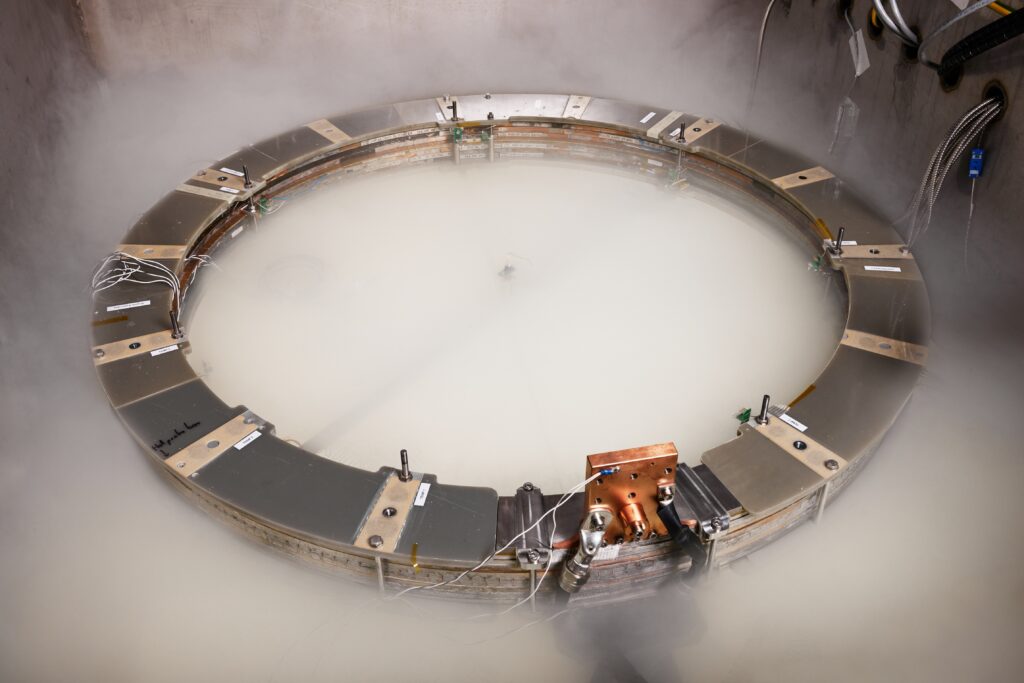 Back
Back
Attempting to unlock near-infinite fusion energy using tokamaks
Tokamak Energy is trying to crack fusion using tokamaks to deliver near-limitless clean energy. It brought a virtual-reality tour of its ST40 compact spherical tokamak which achieved 100 million degrees celsius to 🔥THE HEAT 2024.

BY JOE ROWAN, September 10 2024
THE HEAT, VOYAGERS.io’s first-ever climate-tech festival, took place on Friday September 20 2024 at the extraordinary Harwell Science and Innovation Campus in Oxfordshire.
THE HEAT is a hands-on, practical, mind-expanding, friendship-building, exploratory, curiosity-led, science-based, creative, artistic, participatory, decentralised, experimental, edgy, live, risky, urgent and unpredictable gathering of the talented people working on climate technologies. THE HEAT is not a conference. Don’t expect dull panels or awful coffee. Instead, come to make new friends, experience science in action, learn and share your knowledge, inspire and be inspired. Bring your most engaged and curious festival mindset.
Tokamak Energy is trying to crack fusion using tokamaks to deliver near-limitless clean energy. It brought a virtual-reality tour of its ST40 compact spherical tokamak which achieved 100 million degrees celsius to 🔥THE HEAT 2024.
🧠 Learn more about Tokamak Energy in our article below and at https://tokamakenergy.com/.
Tokamak Energy is on a mission to commercialise fusion energy in the 2030s. The Oxfordshire-based company hopes that it can use the same energy source that powers the Sun to provide clean, secure and affordable energy for everyone.
Nuclear fusion is the process by which two light atomic nuclei combine to form a single heavier one while releasing massive amounts of energy. The issue with fusion is that it is not yet clear whether it is possible to build a commercial fusion power plant that releases more energy than it uses. Four companies that came to THE HEAT 2024 that are trying to solve this problem include First Light Fusion, Novatron Fusion, Tokamak Energy and Proxima Fusion. Whilst First Light Fusion is using a high-velocity projectile to collide with a target containing fusion fuel, Novatron Fusion is using a magnetic field to try to get plasma (a hot, charged gas which has unique properties distinct from solids, liquids or gases) to reach stable equilibrium in the centre of the reactor, Tokamak Energy is working with tokamaks, machines that confine plasma using magnetic fields in a doughnut shape, and Proxima Fusion is using stellarators, which are similar to tokamaks but have no induced electrical current in the plasma.
Founded in 2009 as a spin-off from the UK Atomic Energy Authority, Tokamak Energy has been developing the compact spherical tokamak and High Temperature Superconducting (HTS) magnets for over a decade. These are devices that use magnetic fields to confine and control plasma, ensuring the temperature is high enough for two forms of hydrogen, deuterium and tritium, to fuse to produce helium and release large amounts of energy. Fusion reactions are easier to stop and are therefore safer than fission reactions because they need a continuous fuel supply, and also produce no long-lived nuclear waste.

“Scientists first realised the potential of tokamaks to achieve fusion conditions in the 1960s,” says Tokamak Energy’s CEO, Warrick Matthews. “In the 1980s, a study by one of our founders, Alan Sykes, revealed that modifying the shape of the tokamak would significantly improve performance.” This meant that the company’s tokamaks would assume a more compact and compressed spherical shape, which was found to be more efficient and involve lower capital investment, operating costs and a smaller footprint than the traditional ring doughnut shape. It is now used in energy programmes around the world, including the UK Government’s Spherical Tokamak for Energy Production (STEP) project.

The company’s latest device is the ST40 high-field compact spherical tokamak, which is the most advanced of its kind. In 2022, it broke world records when it reached a plasma ion temperature of 100 million degrees Celsius, which is over six times hotter than the Sun and is considered the temperature required to achieve fusion energy. It has also demonstrated the highest “triple product” of any fusion company, which is a metric of plasma temperature, density and confinement time and can be used as a key measure of progress towards fusion.
Tokamak Energy’s high-temperature superconducting (HTS) magnets, used to control the shape and position of the plasma to enable fusion, are five times as energy-efficient as conventional superconductors. They can also be used for other applications outside of fusion, such as improving medical diagnostics and advancements in the defence industry. “Our ambition is to provide magnet systems for other fusion companies to accelerate commercial development,” Matthews says. “We will also address exciting new applications for HTS, including renewable energy, science and propulsion in water, land, air and space.”
The 250-strong company has 77 families of patent applications and has raised $250 million, including $50m from the UK and US governments and $200m from private investors such as L&G Capital, Hans-Peter Wild, and David Harding, CEO of Winton Capital. It has a long-standing collaboration agreement with the UK Atomic Energy Authority, has partnered with General Atomics in California and Sumitomo Corporation and Furukawa in Japan, and is a member of the Fusion Cluster and the Fusion Industry Association. Its US subsidiary, Tokamak Energy Inc, established in 2019, is one of eight companies selected by the US Department of Energy in 2023 for an award for its work on fusion.
Its latest project, which is still under construction, is the Demo4 magnet system. Designed as a complete balanced set of HTS magnets in a tokamak configuration, it will operate in a vacuum at 20 Kelvin (-253°C) and its magnetic field will be nearly a million times stronger than that of Earth.
Tokamak Energy brought a virtual-reality headset for a tour of its ST40 compact spherical tokamak which achieved 100 million degrees celsius, as well as a fusion technology poster exhibition and an HTS magnet table-top display to THE HEAT 2024.
